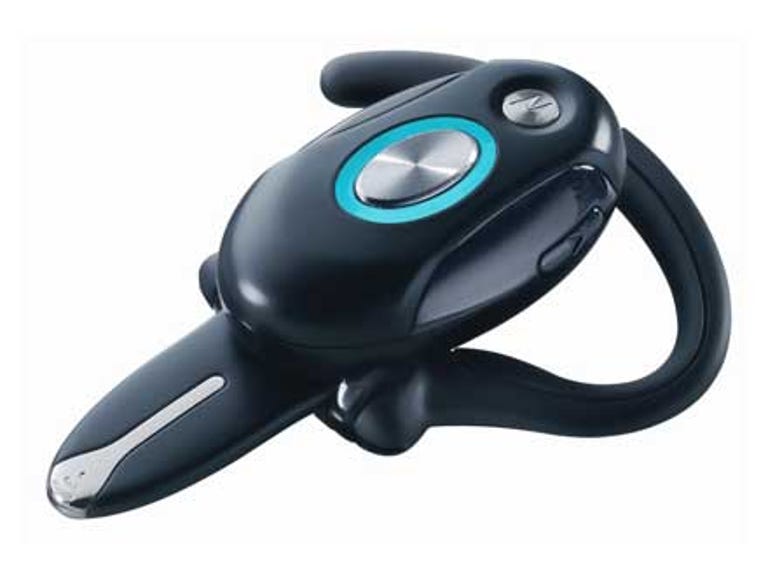 Why You Can Trust CNET
Why You Can Trust CNET Motorola Bluetooth Headset H710 review: Motorola Bluetooth Headset H710
The H710 looks to continue Moto's success with Bluetooth headsets. The H710 incorporates Multipoint access letting users connect several compatible devices simultaneously.
Design
The H710 is one of the best looking hands-free headsets we've seen recently. In previous reviews we've suggested that the most attractive hands-free headset is the one you can't see, and the H710's miniature dimensions makes this almost the case here. However, with the H710 sitting on our desks it's been hard to look away from what is a very interesting looking device.
The Good
The Bad
The Bottom Line
Made from a combination of black and silver plastics, the H710 is as lightweight as it's easy on the eye. The headset uses a hinged ear hook, similar to many similar products, but the flip-phone styled microphone is definitely a unique and interesting inclusion. Flipping the boom open activates the headset and reconnects it to your phone for use. Closing the mic not only makes the headset smaller and more streamlined for transporting, but powers down the H710, prolonging the standby battery life.
In total the H710 makes use of only three buttons, a volume key on each side of the headset, and a large button on top. Under the larger button the H710 has a multicoloured LED backlight to communicate the differing states of use; blue for Bluetooth connections, green to tell you the battery is fully charged, red to warn that the battery is about to run out and pink to tell you the H710 is happy.
Charging the H710 is via an unconventionally shaped USB port so you'll have to be sure not to lose the Motorola charger that comes bundled with the headset.
Performance
They say all that glitters is gold; this is not our experience with Motorola's H710 headset. While the H710 is an excellently designed and aesthetically pleasing gadget, using the headset has been harder than seems necessary, and the overall performance has been mediocre at best.
Pairing a Bluetooth headset to a phone should be an almost one-touch process, however, our experience of pairing the H710 to phones has required more concentration than we think the process deserves. After flipping the boom mic open the LED backlight flashes blue several times and then goes blank. At this point you should hold down the main button and wait for the LED to turn solid blue to indicate the H710 is in pairing mode. This describes the process when it works. Often we saw no LED light when we flipped the boom open, and still nothing after we held the button in for several seconds. We'd repeat the process, closing and reopening the microphone, waiting for the blue lights, holding down buttons and swearing loudly.
We attempted to pair the headset with several brands of phones including two Nokias, an iPhone and two Sony Ericssons. The Nokias and the iPhone paired as expected, but the Sony Ericsson handsets couldn't discover the H710 to pair with it.
We had been looking forward to testing the Multipoint feature, the ability to pair to two phones simultaneously, but the difficulties we had pairing were simply multiplied. To activate Multipoint you first shut down the first handset you've paired, then repeat the original pairing process with the second handset. Again we were left flipping the boom mic open and shut, looking for lights and cursing Motorola.
Once paired, our experience making calls varied. Using the Nokia handsets, we experienced considerable distortion with loud crackling and audio drop-outs. During one call the distortion was so bad we had to disconnect the headset to finish the conversation. With the iPhone the performance was much better with clear audio during our calls.
Overall
Our excitement at discovering the attractive H710 on our desks quickly turned to frustration and disappointment when trying to pair the headset and when making calls. Using the H710 with an iPhone gave us some hope that the experience could improve from device to device. If you're interested in this headset we strongly suggest testing it with your handset in the store before you hand over the cash.


